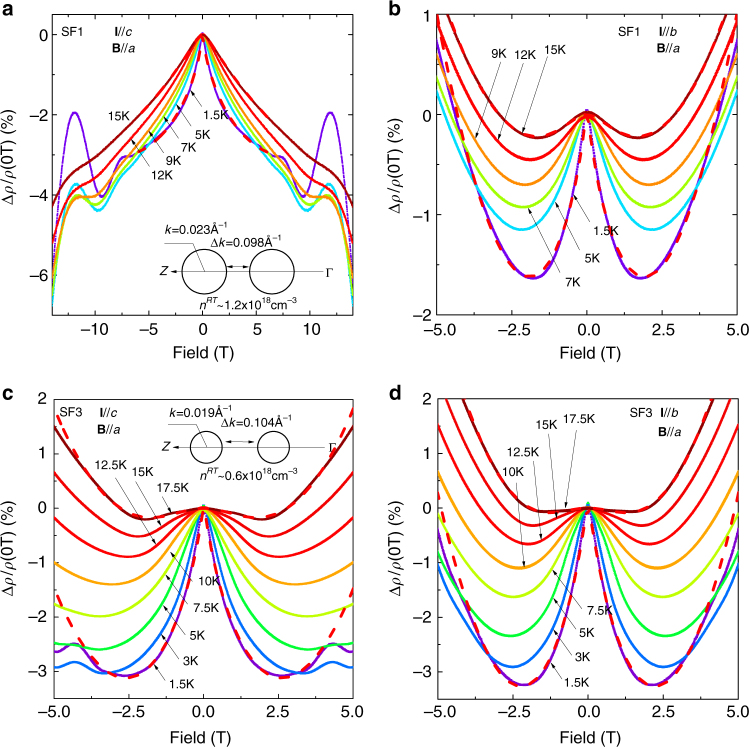Fig. 3.
Doping-dependent highly anisotropic weak localisation in p-SnSe. a, b NMR in SF1-SnSe for I||c and I||b, respectively, when the positive WL correction to resistivity is suppressed by external field. The red-dash lines are the fitting results using the WL model in the main text, which explains the evolution of low-field NMR very well by T-dependent l ϕ. Strikingly, the NMR growth of SF1-SnSe for I||c is non-saturating up to 14 T, while NMR for I||b dwindles as a function of T and is only dominant below 2 T. The low-field NMR in SF3-SnSe becomes less anisotropic, however, the overall WL correction to resistivity is stronger in these samples (see c, d). The insets of a, c show the sketches of the FS cross-sections for SF1- and SF3-SnSe, respectively. For I||c, intervalley scattering assisted by the in-plane dipole field along the c-axis gets enhanced, when the two pudding-mould valleys become closer by p-doping. Note that the SnSe2 phase segregation may lead to non-uniform doping in p-SnSe, making the two pudding-mould valleys even closer in localised areas

